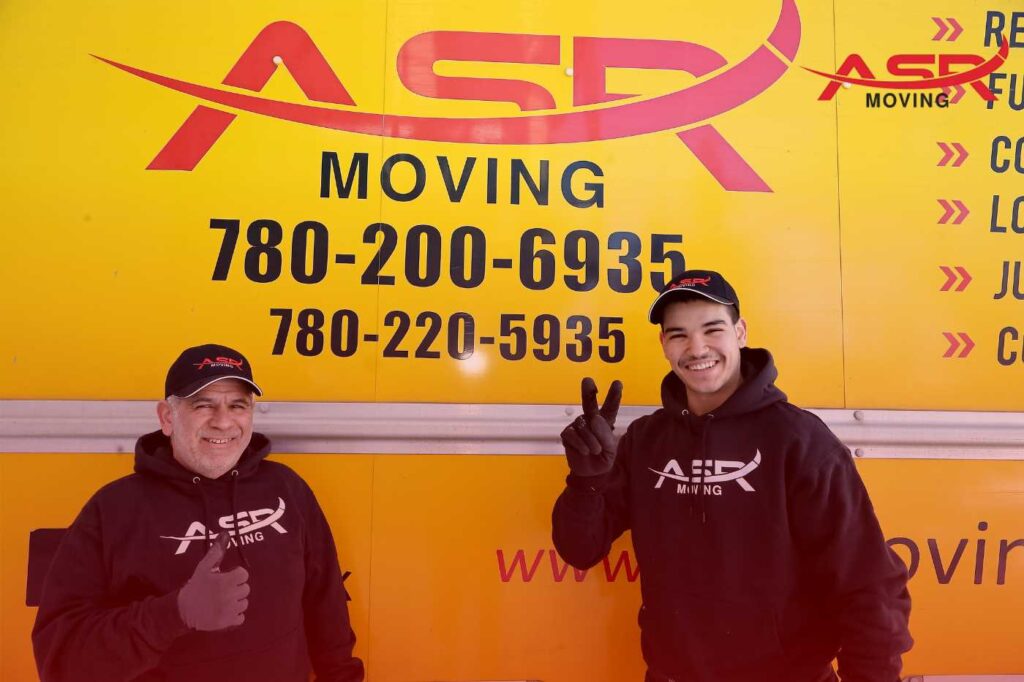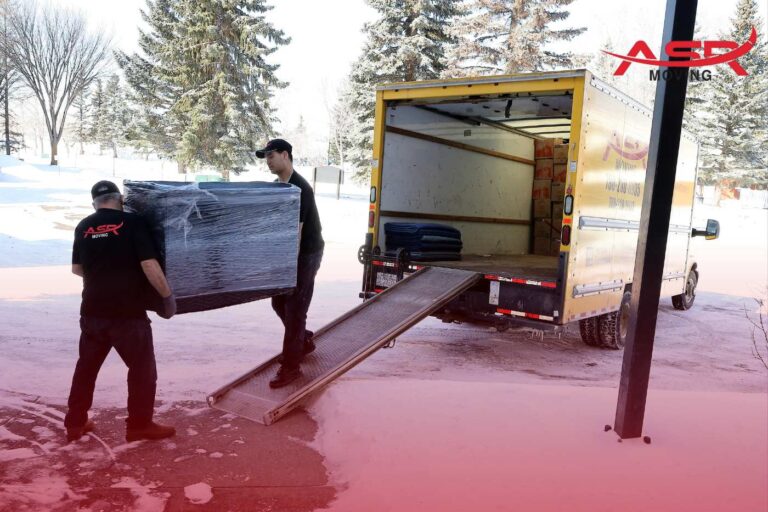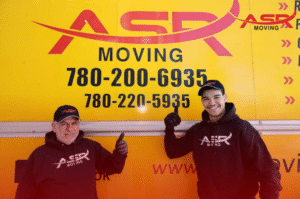A cross-country move in Canada is a significantly more complex endeavor than a local relocation. The vast distances, varying provincial regulations, and diverse climates introduce unique challenges that require meticulous planning and preparation.
In Canada, the cost of a cross-country move can vary widely based on distance, shipment weight, and additional services. For instance, moving from Vancouver to Toronto can cost approximately $5,000, while a move from Edmonton to Toronto may reach around $6,455. These figures highlight the financial commitment involved in long-distance moving.
The logistics of a cross-country move are also more intricate. Longer distances mean longer timelines, with potential delays due to weather conditions, road closures, or other unforeseen circumstances. Additionally, differing provincial regulations can impact the moving process, requiring careful coordination and compliance.
Given these complexities, it’s essential to approach a cross-country move with a comprehensive plan that addresses all aspects of the relocation process.
Step 1: Start Planning Months in Advance

A successful cross-country move doesn’t start a few weeks before your departure—it begins three to six months ahead. This early window gives you time to research, compare, and book reputable moving companies before peak moving season drives prices up or limits availability.
Recommended Timeline:
- 6 months out: Begin researching movers, estimating your moving budget, and exploring your travel options (flying vs. driving).
- 4 months out: Secure your moving date, start downsizing belongings, and decide which items you’ll move, store, or sell.
- 3 months out: Confirm all travel and lodging plans, arrange for any required moving insurance, and start gathering moving supplies.
Key Factors to Decide Early:
- Budget: Estimate costs for movers, packing materials, travel, and temporary accommodations.
- Moving Date: Aim for mid-week or mid-month to avoid premium pricing.
- Seasonality: Moving in the summer may be convenient for school schedules but will often cost more due to high demand.
Step 2: Create a Master Moving Checklist

A master checklist is your roadmap for staying organized and keeping stress levels low. Break your tasks down by timeframes so you don’t feel overwhelmed as moving day approaches.
8 Weeks Out:
- Declutter your home—sell, donate, or dispose of items you won’t take.
- Book for full-service packing and transportation.
- Gather important records (medical, school, financial) and keep them in a safe, accessible folder.
4 Weeks Out:
- Arrange utilities at your new home (electricity, water, internet) to start before you arrive.
- Begin packing non-essential items.
- Update your mailing address with USPS, banks, and subscription services.
Moving Week:
- Pack essentials for travel (clothes, toiletries, medications, chargers).
- Confirm moving day details, including arrival time and special instructions.
- Prepare your old home for move-out inspection or sale.
Moving Day:
- Do a final walkthrough to ensure nothing is left behind.
- Keep valuables, important documents, and essentials with you.
Step 3: Budgeting for a Cross-Country Move

One of the biggest surprises in a cross-country move is the true cost, which often extends beyond truck rental or moving day fees. Planning your budget early helps you avoid financial stress.
Typical Cost Ranges:
- Professional Movers: $4,000–$9,000+ (depending on distance, home size, and service level). Full-service options include packing, loading, transport, and unloading.
- DIY Truck Rental: $1,500–$3,000+ (fuel, lodging, and labor not included). While this seems cheaper, hidden expenses and physical labor can add up fast.
Hidden Costs to Watch For:
- Moving insurance (especially for high-value items).
- Temporary storage fees.
- Pet relocation costs (boarding, travel crates, airfare).
- Tolls, fuel surcharges, and parking permits.
- Packing supplies beyond basic boxes (wardrobe boxes, specialty crates).
Step 4: Declutter Before You Pack

A cross-country move is the perfect chance to streamline your life. The less you bring, the easier (and cheaper) your move will be. Downsizing before packing reduces moving costs, minimizes stress, and makes unpacking at your new home faster.
How to decide what stays and what goes:
- Sell: Valuable items you no longer use—furniture, electronics, collectibles—can be sold through Facebook Marketplace, Craigslist, or local classifieds.
- Donate: Clothing, kitchenware, and small appliances in good condition can go to charities, thrift shops, or shelters.
- Recycle: Broken electronics, old papers, and certain plastics can be dropped off at recycling centers.
- Discard: Items that are damaged, expired, or beyond repair should be safely disposed of.
Step 5: Packing for a Long-Distance Move

Packing for a cross-country relocation requires extra care to keep your belongings safe over hundreds or even thousands of miles.
Best practices for secure packing:
- Use sturdy boxes that can handle stacking without collapsing.
- Wrap fragile items in bubble wrap or packing paper. Consider specialty boxes for TVs, artwork, and glassware.
- Color-code your boxes by room for faster unloading and unpacking. For example, use blue labels for kitchen items and yellow for bedroom essentials.
- Seal every box tightly with strong packing tape to avoid damage during transit.
Pro tip: Keep an essentials box with toiletries, important documents, chargers, a change of clothes, and snacks. That way, you have immediate access to necessities without digging through dozens of boxes on your first night.
Step 6: Choosing the Right Moving Company

The mover you choose can make or break your cross-country experience. Taking time to research your options ensures your belongings are in safe hands.
If you’re looking to hire a local mover in Edmonton, Asr Moving can be a reliable choice with experience, transparent pricing, and positive customer reviews.
Steps to find a trusted mover:
- Research multiple companies and request in-home or virtual estimates for accurate pricing.
- Check credentials: Verify the mover’s DOT (Department of Transportation) number for legitimacy.
- Read reviews on Google, Yelp, and the Better Business Bureau to gauge reliability and service quality.
- Ask the right questions:
- What’s included in the quote?
- Are there extra charges for stairs, heavy items, or fuel?
- How is damage handled?
Red flags to watch for:
- No physical address or website
- Only taking cash payments
- Extremely low quotes compared to competitors
- Refusing to provide a written contract
Step 7: Understanding Insurance and Protection Plans

Long-distance moves involve more miles, more handling, and more opportunities for your belongings to be damaged. That’s why understanding your insurance options before the first box is loaded is critical.
Professional moving companies offer different coverage levels, including:
- Basic Carrier Liability (Released Value Protection) – This is often included at no extra cost but offers minimal compensation per pound of damaged items.
- Full Value Protection – This ensures that damaged or lost items are repaired, replaced, or compensated at their current market value.
- Third-Party Insurance – Additional coverage purchased through an external provider for high-value or fragile belongings.
Before deciding, review your homeowner’s or renter’s policy to see if it covers moving-related damage. Ask for written details of coverage from your mover so you’re clear on limits and exclusions. Investing in the right protection can prevent costly surprises later.
Step 8: Preparing Important Documents

Moving cross-country means you’ll be handling more paperwork than usual. Organizing these documents in one secure folder or binder can save headaches down the road:
- Personal IDs: Passports, driver’s licenses, birth certificates
- Moving Contracts: Agreements with your moving company, insurance details
- Housing Documents: Lease, mortgage papers, closing statements
- Medical Records: Health, dental, and vaccination records for both people and pets
- School Records: Transcripts, transfer forms, special education plans
- Financial Documents: Bank info, tax records, investment paperwork
Keep these with you during the move, not in the moving truck, for quick access when needed.
Step 9: Moving With Kids or Pets

Relocating across the country can be exciting for adults but overwhelming for children and animals. Preparing them ahead of time can reduce stress for everyone.
For Kids:
- Involve them in the packing process by letting them choose a “first-night box” with their favorite toys and essentials.
- Talk about the new home and community to build excitement.
- Maintain familiar routines as much as possible in the days before and after the move.
For Pets:
- Visit the vet for a pre-move checkup and update vaccinations.
- Get them used to travel crates in advance.
- Pack a dedicated pet essentials bag with food, water, bedding, and comfort items.
Step 10: Settling Into Your New Home

The first days in your new home set the tone for a smooth transition. Focus on these priorities:
Unpack essentials first
Bedding, kitchen basics, toiletries, important documents, and personal items. Keeping these accessible helps you settle in comfortably.
Set up utilities and services
Ensure electricity, water, internet, and security systems are working properly to avoid daily disruptions.
Handle administrative tasks
- Register your vehicle in your new province
- Update your driver’s license
- Complete voter registration
Familiarize yourself with your neighborhood
Locate nearby stores, healthcare providers, schools, and community services to make daily life easier.
By tackling these tasks systematically, you can reduce stress and start enjoying your new home sooner.
Long-distance moves can be stressful, but having the right moving partner makes all the difference. Asr Moving is trusted by Canadians for providing reliable, professional, and customer-focused service throughout every stage of a cross-country relocation.
Wrapping Up
A cross-country move doesn’t have to be overwhelming. Careful planning, organized packing, and a trusted moving partner can simplify every step of the process. Decluttering, budgeting, choosing the right moving company, and settling into your new home are all essential for a smooth, stress-free relocation.



